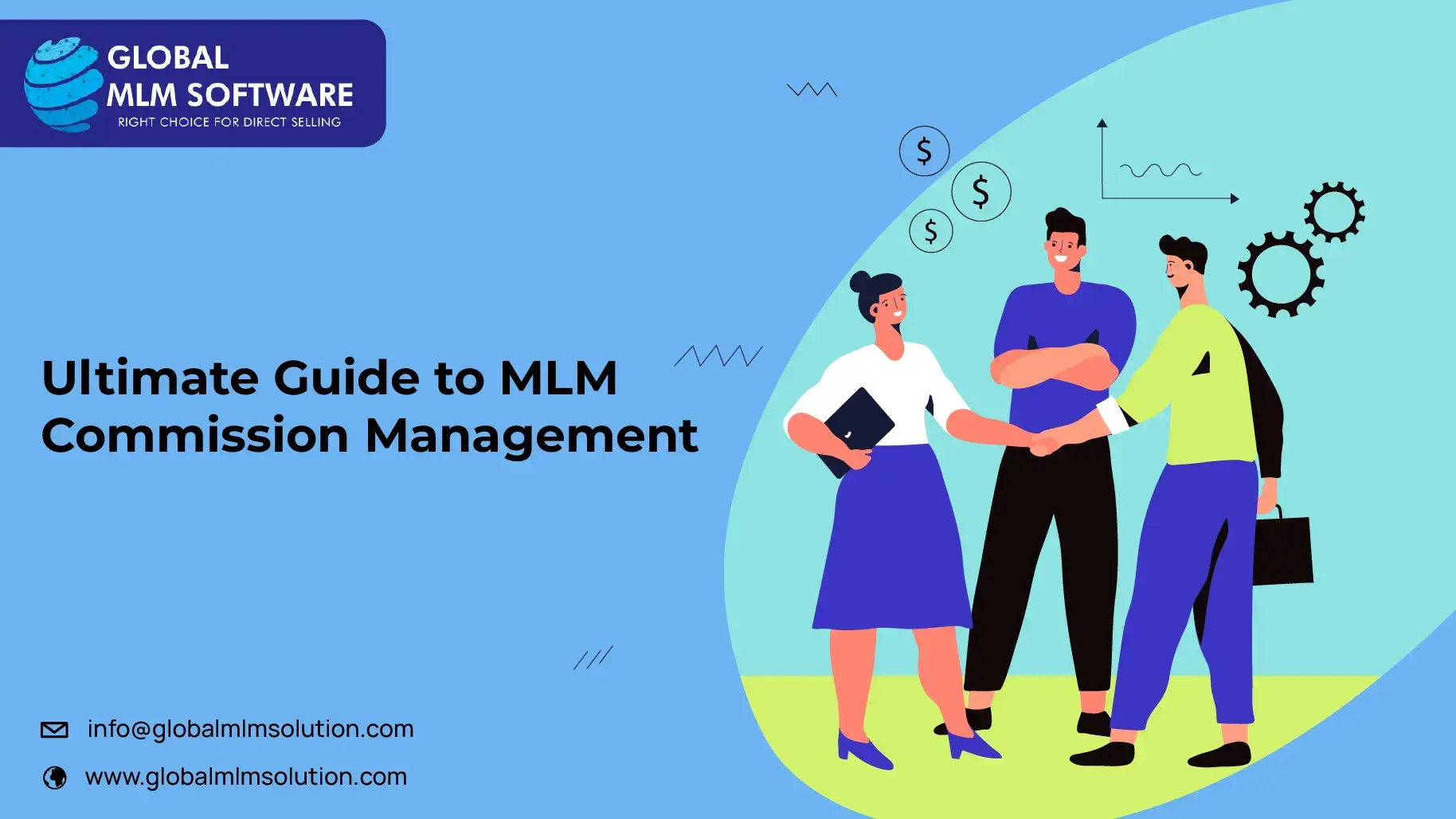Imagine a scenario in your MLM business where your distributors start strong but quickly lose momentum. Sales slow down, motivation fades, and retention becomes a challenge. This issue isn’t just regarding recruitment, it's about keeping your team engaged and consistently selling. This is where PV plays a crucial role. If you get it right, it will drive growth and stability. If you get it wrong, you risk high churn rates and declining revenue.
So what is PV in MLM and why does it matter? If you are new to the MLM world, this blog will help you understand PV in MLM. Let’s decode this essential part of an MLM compensation plan, understand the different types of PV, how it works, how it is calculated, and much more. Read on!
This Article Contains:
What is PV in Network Marketing?
PV (Point Value/Personal Volume) is a point-based system used in MLM companies. Each product has a set PV. When a distributor sells or buys products, they earn that amount of PV. The total PV collected in a month is the distributor’s personal volume and includes both customer sales and personal purchases. Also, many MLMs set a minimum PV requirement for a month to ensure distributors remain active.
For Example: A skincare product has a PV of 50, and distributor “A” sells two of them. Then, their total PV for the month would be 100 PV. Now, an MLM company “M” requires distributors to maintain a minimum of 200 PV per month to stay active and qualify for commissions. “A” has to sell 2 more products with a PV of 50 to become eligible for commissions and bonuses.
The Role of PV in MLM
PV plays a crucial role in MLM. A well-balanced PV should align with product pricing and MLM commission structure. If PV is too high, it may discourage distributors and may lead to drop-outs. If it is too low, it can impact the company’s profitability. Also, it is a key factor in how MLM distributors earn and grow their business. It determines:
1. Commission Eligibility
A minimum PV is required for distributors to qualify for commissions. This ensures that they are not just recruiting others, but also personally engaging with and promoting the products. Companies use this to encourage active participation rather than passive earning.
2. Rank Advancements
Higher PV often leads to promotions within the compensation plan. Most companies require a certain amount of personal volume along with team sales to qualify for promotions. Reaching these PV goals shows commitment and helps unlock new income levels and rewards.
3. Bonuses and Incentives
Extra rewards, such as bonuses and incentives, are offered based on PV performance. These incentives are typically tied to achieving specific PV goals over a set time period. They spark short-term momentum and reward consistent sellers.
4. Team Growth & Stability
When distributors regularly meet PV requirements, it helps the team grow and ensures long-term stability. It also helps others stay motivated and do the same, which leads to a stronger, more stable team that’s less likely to lose members.
5. Sales Consistency
PV ensures that distributors stay active and engaged in selling products regularly. Through this, MLMs encourage ongoing customer engagement and product movement. This also provides a steady stream of revenue for both the distributor and the company.
Types of Personal Volume in MLM
In MLM, PV is a key part of every compensation plan, whether it is a binary, unilevel, or matrix MLM plan. However, the types of PV across these plans remain the same. It can be broadly categorized into different types based on how it is generated. Knowing these types can help you create fair compensation plans and keep distributors motivated.
1. Customer Sales PV
This is the PV earned from selling products directly to customers. It is the most sustainable and commission-friendly way to generate PV.
2. Personal Purchase PV
This is the PV earned when a distributor buys products for personal use. It is counted toward commission qualification. However, some compensation plans may limit it to prevent inventory loading.
3. Auto-Ship PV
Many MLMs offer an auto-ship program, under which customers subscribe to receive products monthly. The PV generated through such orders is considered under Auto-ship PV. This guarantees a consistent PV flow.
4. Retail PV vs Wholesale PV
Some MLMs assign different PV values based on how a product is sold. Retail sales at full price may have a different PV than distributor purchases made at a discounted or wholesale rate.
5. Bonus Qualified PV
Some MLMs set a required PV level for distributors to earn extra rewards like leadership bonuses or profit-sharing. When the distributors reach this target, they earn extra rewards along with their regular commissions.
Why is PV Important in MLM?
PV in MLM is important as it directly impacts a distributor’s earnings and the company’s overall growth. A good PV system also helps reduce one of the biggest MLM enterprise management challenges, i.e., distributor dropouts. When distributors see a clear path to earnings and advancement through PV, they are more likely to stay engaged and committed. More reasons why it is important include:
1. To qualify for commissions
Many MLMs require distributors to maintain a minimum PV to be eligible for commissions. Without it, they may not receive earnings from team sales.
2. For Rank Advancement
Higher PV often helps distributors climb the ranks in an MLM structure. This helps them unlock higher commission percentages, leadership bonuses, and exclusive rewards.
3. Goal Setting and Motivation
PV in network marketing gives distributors a clear target to work towards. This helps them stay motivated and focused on making sales and growing their business.
4. Fair Earnings
PV ensures that distributors earn based on their actual sales. This system rewards those who actively sell products instead of just recruiting new members. Moreover, the FTC mentions that retail sales should be prioritized over recruitment in MLM compensation plans.
How to Calculate Personal Volume in MLM?
Personal volume in MLM is calculated from product sales and personal purchases. It forms a very important part of your business’s commission structure. However, the way you define PV can impact the distributor’s earnings and motivation. Also, MLM commission software helps in accurate calculations of PV. This software tracks PV, reduces errors, and simplifies commission payouts. Here are some common ways to calculate PV:
1. Standard PV Calculation
This is the most common method to calculate MLM PV. In this approach, each product is assigned a fixed PV based on its value. Distributors earn PV based on the total number of products they sell or purchase. This model keeps PV calculation simple and predictable for distributors. Also, having a fixed PV ensures consistency across different regions, even if the product prices vary.
Example: A distributor sells five units of a wellness supplement, whose retail value is $20 and a PV of 30. Their total for the month would be 30*5 = 150 PV.
2. Percentage-Based PV
This is another method to calculate PV. Under this, PV is assigned based on the percentage of the product’s retail price instead of a fixed value. This method allows for more flexibility, as PV is directly tied to the product’s price. However, the price can vary across different markets.
Example: A distributor sells a skincare product worth $50, and the MLM company assigns 40% of the retail price to PV. In this case, the PV for one unit would be $50*40%- 20PV. If a distributor sells 5 such units, their total for the month would be 20*5=100 PV.
3. PV from Customer Vs Personal Purchases
Under this method, PV from customer sales and PV from a distributor’s personal purchases have different values. This helps make sure distributors sell to real customers instead of buying products themselves just to meet PV requirements.
Example: A distributor sells skincare products worth 200 PV to customers. Also, he personally purchases 100 PV worth of products. If the company counts 100% of customer sales PV but only 50% of personal purchase PV, then the distributor’s total PV calculation would be:
-
Customer Sales PV: 200 PV (fully counted)
-
Personal Purchase PV: 100 PV*50%= 50 PV
-
Total PV for the month: 200 PV + 50 PV = 250 PV
How Does PV in Network Marketing Work?
PV in network marketing works by tracking a distributor’s sales activity. It measures both personal sales and purchases, to ensure they meet requirements for commissions and bonuses. Here is how it functions:
1. PV is Assigned to Each Product
Every product has a predetermined PV, which may or may not be equal to its price. For example, a $50 product might have 40PV, depending on the compensation structure.
2. It is Earned Through Sales and Purchases
Distributors accumulate PV by selling products to customers or purchasing for personal use. In some cases, personal purchases may have a lesser PV than customer purchases.
3. It Resets Monthly
In most MLM plans, PV is calculated on a monthly basis. Distributors must meet a minimum PV requirement each month to remain eligible for commissions and rank qualifications.
4. It Contributes to Team Volume
A distributor’s PV often rolls up to contribute to the overall team volume, impacting group bonuses and leadership ranks.
5. It Can Vary Based on Compensation Plan
Different MLM structures, such as binary, unilevel, and matrix, use PV in different ways to calculate commissions, bonuses, and rank advancements. To set up a fair and effective system, MLM Consulting services can help you determine the right PV balance. This ensures distributors stay motivated and supports long-term growth.
FAQs
1. Does MLM PV affect commission payouts?
Yes, most MLM commission structures set a minimum PV that distributors must meet to earn commissions. A higher PV can lead to bigger earnings and bonuses.
2. What happens if a distributor doesn’t meet the required PV?
If a distributor doesn’t reach the minimum PV, they might earn less or lose their commission for that period.
3. Can PV be carried over to the next month?
This depends on the company's policy. Some MLMs allow PV rollover, while others reset it monthly.
Disclaimer: Global MLM Software does not endorse any companies or products mentioned in this article. The content is derived from publicly available resources and does not favor any specific organizations, individuals or products.






Conclusion
Understanding what is PV in MLM is essential for driving earnings, rank advancements, and distributor engagement. A well-planned PV strategy boosts retention, motivation, and long-term growth. However, you need robust MLM software to accurately track distributors’ PV and provide error-free commission calculations.
Global MLM Software provides you with cutting-edge, customizable, and scalable software solutions that simplify commission management, and business automation. Don’t let outdated software hold you back. Empower your MLM business with the best MLM software in the industry. Connect with us today!